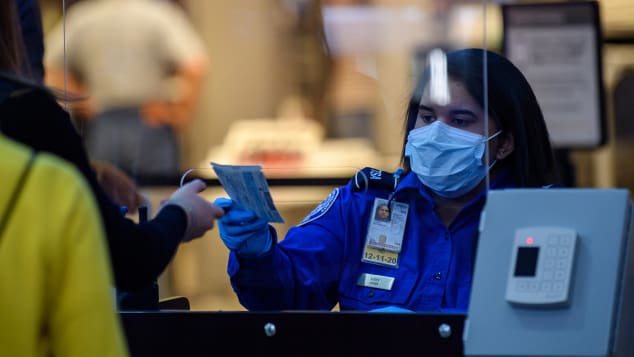
(CNN) — We don’t know about you, but we’re ready to travel. And that typically means flying.
We have been thinking through this issue as moms and as an exposure scientist and infectious disease epidemiologist. While we’ve decided personally that we’re not going to fly right now, we will walk you through our thought process on what to consider and how to minimize your risks.
Why the fear of flying?
The primary concern with flying — or traveling by bus or train — is sitting within six feet of an infected person. Remember: Even asymptomatic people can transmit. Your risk of infection directly corresponds to your dose of exposure, which is determined by your duration of time exposed and the amount of virus-contaminated droplets in the air.
A secondary concern is contact with contaminated surfaces. When an infected person contaminates a shared armrest, airport restroom handle, seat tray or other item, the virus can survive for hours though it degrades over time. If you touch that surface and then touch your mouth or nose, you put yourself at risk of infection.
Before you book, think
While there is no way to make air travel 100% safe, there are ways to make it safer. It’s important to think through the particulars for each trip.
One approach to your decision-making is to use what occupational health experts call the hierarchy of controls. This approach does two things. It focuses on strategies to control exposures close to the source. Second, it minimizes how much you have to rely on individual human behavior to control exposure. It’s important to remember you may be infectious and everyone around you may also be infectious.
The best way to control exposure is to eliminate the hazard. Since we cannot eliminate the new coronavirus, ask yourself if you can eliminate the trip. Think extra hard if you are older or have preexisting conditions, or if you are going to visit someone in that position.
If you are healthy and those you visit are healthy, think about ways to substitute the hazard. Is it possible to drive? This would allow you to have more control over minimizing your exposures, particularly if the distance is less than a day of travel.
You’re going, now what?
If you choose to fly, check out airlines’ policies on seating and boarding. Some are minimizing capacity and spacing passengers by not using middle seats and having empty rows. Others are boarding from the back of the plane. Some that were criticized for filling their planes to capacity have announced plans to allow customers to cancel their flights if the flight goes over 70% passenger seating capacity.
Federal and state guidance is changing constantly, so make sure you look up the most recent guidance from government agencies and the airlines and airport you are using for additional advice, and current policies or restrictions.
While this may sound counterintuitive, consider booking multiple, shorter flights. This will decrease the likelihood of having to use the lavatory and the duration of exposure to an infectious person on the plane.
After you book, select a window seat if possible. If you consider the six-foot radius circle around you, having a wall on one side would directly reduce the number of people you are exposed to during the flight in half, not to mention all the people going up and down the aisle.
Also, check out your airline to see their engineering controls that are designed or put into practice to isolate hazards. These include ventilation systems, on-board barriers and electrostatic disinfectant sprays on flights.
When the ventilation system on planes is operating, planes have a very high ratio of outside fresh air to recirculated air — about 10 times higher than most commercial buildings. Plus, most planes’ ventilation systems have HEPA filters. These are at least 99.9% effective at removing particles that are 0.3 microns in diameter and more efficient at removing both smaller and larger particles.
END

Be the first to comment